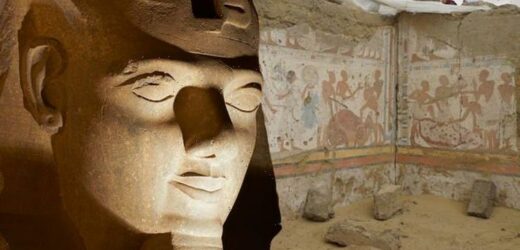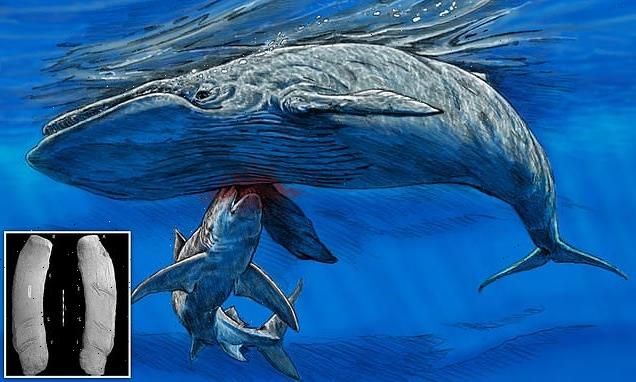Ancient Egypt: Zoo animals found buried alongside an early ruler
We use your sign-up to provide content in ways you’ve consented to and to improve our understanding of you. This may include adverts from us and 3rd parties based on our understanding. You can unsubscribe at any time. More info
A team from Cairo University found the tomb of the chief treasurer of King Ramses II. Known as Ptah-M-Wia, his final resting spot was discovered in Saqqara. Archaeologist Ola Al-Ajezi said Ptah-M-Wia’s tomb typifies monumental gravesites in the region, known as tomb-temples, which include an ornate edifice followed by one or more courtyards.
The team found numerous engraved stone blocks as well as columns shaped like Osiris, the Egyptian god of the dead.
Ms Al-Ajez said:: “All these pieces will be studied to be put back in their original places inside the tomb.”
No human remains have been found in the tomb so far.
Inscriptions in the tomb indicate that Ptah-M-Wia’s held several positions under Ramses II, including chief treasurer and chief supervisor of livestock and offerings at the pharaoh’s temple in Thebes.


Experts also found wall paintings showing people leading cattle and other animals to slaughter.
It has been reported that he would have overseen payments made in goods, as minted coins had not been invented.
The third pharaoh in Egypt’s 19th Dynasty, Ramses II, also known as Ramses the Great, is often regarded as the greatest, most celebrated, and most powerful pharaoh of the New Kingdom.
The early part of his reign was focused on building cities, temples, and monuments.
He established the city of Pi-Ramesses in the Nile Delta as his new capital and used it as the main base for his campaigns in Syria.

He led several military expeditions into the Levant, reasserting Egyptian control over Canaan.
He also led expeditions to the south, into Nubia, commemorated in inscriptions at Beit el-Wali and Gerf Hussein.
He celebrated an unprecedented thirteen or fourteen Sed festivals during his reign—more than any other pharaoh.
Estimates of his age at death vary.
Most believe it was 90 or 91.
On his death, he was buried in a tomb in the Valley of the Kings, his body was later moved to a royal cache where it was discovered in 1881, and is now on display in the Egyptian Museum.


The Cairo University mission has already revealed the tombs of other officials of the era, including the mayor of Memphis, a royal ambassador to foreign countries, and an army commander. All had been looted.
Saqqara has been the site of a string of astonishing finds in recent years, and this latest discovery is the work of a team of archaeologists from Cairo University.
In addition to the tomb of the former treasurer, the team also uncovered the tombs of a number of dignitaries, including a military leader called Hor Mohib.
Around 20 miles south of Cairo, the vast burial ground of Saqqara once served the royal capital of Memphis, and the site is also home to Egypt’s oldest surviving pyramid.
In January, authorities announced the discovery of a cache of ancient burial shafts containing hundreds of wooden coffins.
Source: Read Full Article


